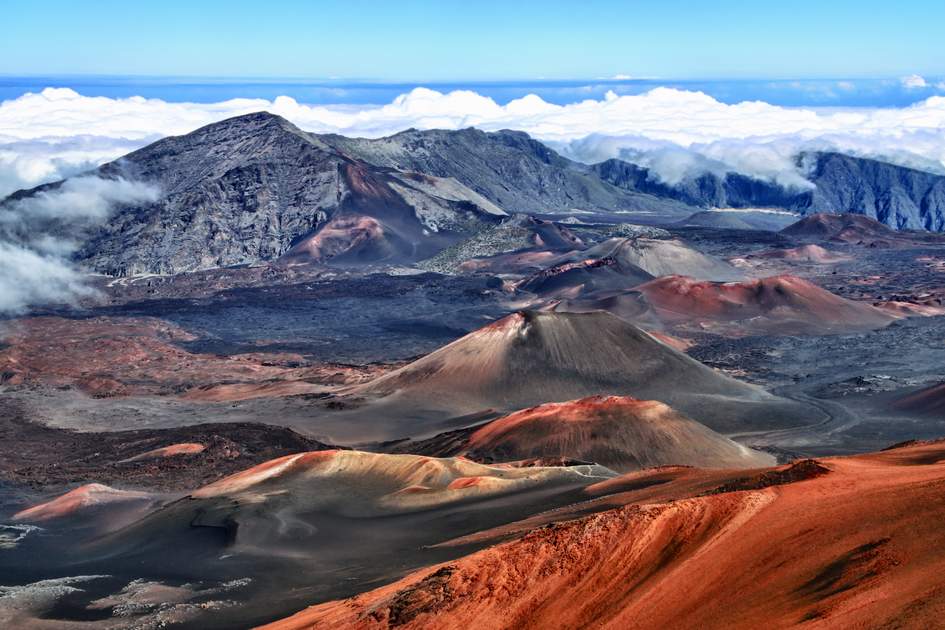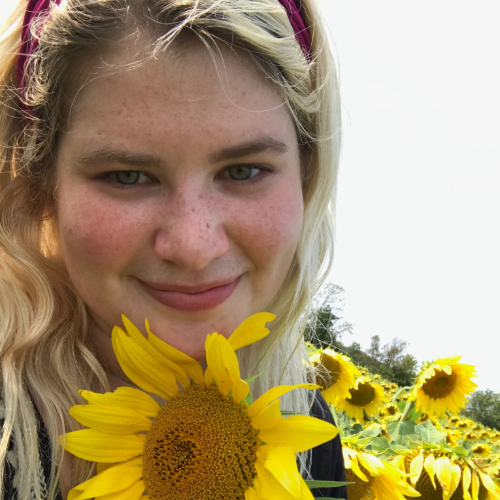In brief: Hawaii Volcanoes National Park

There aren’t many places on Earth where you can see new land being born, but Hawaii is one of them
The Hawaii Volcanoes National Park is a national park like no other in the USA, and one of the island’s big attractions beyond its beaches. It has not one, but two active volcanoes. One of them, Kilauea, is said to be the most active volcano in the world, while the other, Mauna Loa, is the biggest volcano on the face of the earth.
Fortunately for visitors, both volcanoes are considered fairly benign compared to others elsewhere in the world. This wasn’t always the case. The islanders regard Kilauea as the home of Pele, the volcano goddess, and in 1790 a group of warriors offering gifts to Pele were killed during a sudden, violent eruption. You can still see some of their footprints in the lava rock.
Today you can safely hike to the top of Mauna Loa, one of numerous hiking trails in the park. To see the active Kilauea volcano, though, you should allow at least a day for a visit. The park covers a huge area of 323,431 acres and it takes time to get to Kilauea. The reward is to see what is the longest continuously erupting volcano in the world, which has been constantly active since 1983.
Take in the Visitor Center first to learn what the current activity is like, and where the action is. There are geologists on hand to answer questions. From here you can also join the Crater Rim Drive, an 11-mile route through some of the most startlingly unique scenery in the Pacific Ocean.
The park isn't all about volcanic rock, however. It also has an area of desert, lush mist-filled rain forests harboring giant ferns, and everything from black sand beaches to snow on the 13,679ft summit of Mauna Loa.
The following route around the national park has been taken from the latest edition of Insight Guides: Explore Hawaii. Pick up a copy now for 16 more suggested trip itineraries

The best route around the national park:
Distance: 40 miles (64km)
Time: A full day or more
Start: Hawaii Volcanoes National Park Visitor Center
End: Volcano Village
Points to note: The weather can be a bit cool at the top of the park, but layers of clothing are the best solution – the coastline, which can bring you much nearer to flowing lava, is as hot as you’d expect it to be. Covered shoes are a must. Although you can push for half a day, this option really deserves a full day, or better yet, two. This tour is suitable for children − it’s a wonderful park for all ages. If you wish to take your time exploring, a stay in Hilo or Volcano Village is a good option.
Route: First things first – to truly understand the geological force you’re standing upon, start at the Hawaii Volcanoes National Park Visitor Center. Not only will you learn about the volcano, you’ll also get the information you need on road closures and volcanic activity information. Ask the staff if you can view the flowing lava along the coast today – and heed their advice.
Kilauea: Across the road from the visitor center is Volcano House, a hotel and restaurant perched on the very rim of Kilauea Caldera. All of the current volcanic activity is from Kilauea, which is the longest continuously erupting volcano in the world. Volcano House’s location is superb, and its caldera lookout is a must; varying hues of lava on the caldera bottom betray multiple lava flows between 1885 and 1982. The rooms are comfortable, though basic, and the hotel dining room offers decent fare for dinner. Cross the road to the Volcano Art Center, next to the visitor center is rich in creative talent, and the center’s offerings are perhaps some of the best in the islands.
This is the realm of Pele, the volcano goddess. From the visitor center, follow Crater Rim Drive. A few minutes past Steaming Bluff, where seeping groundwater hits hot rock. Drive across a 1974 lava flow to the Halema’uma’u Lookout. The short path is sometimes veiled in smelly vapors; note the signs and health warnings. Halema’uma’u, a collapsed crater within Kilauea Caldera, is said to be the current abode of Pele. Believers leave gifts of ti leaves, coins and flower leis on the rim. It’s considered very bad luck to take lava rock from the island – the visitor’s center features letters of those that have sent it back.
Loihi: Turn off on to the Chain of Craters Road, which descends down Kilauea’s East Rift (which itself descends into the ocean). A new island-to-be, Loihi, gestates 3,000ft (9l5 meters) below the surface on the east rift and is probably 100,000 years from reaching the surface. Once it was possible to loop around to Hilo this back way through the village of Kalapana, but Pele, ever a force to be reckoned with, changed all that when flowing lava destroyed the town and road.
Viewing lava
When lava flows hit the ocean, spiraling clouds of steam rise furiously hundreds of feet into the air. Twilight turns the coast into a strangely beautiful and surreal red perdition. Check with the visitor center about hiking out – if they say it’s a go, do so in the evening for the best views. Returning to the rim road, drive past the Kilauea Iki Crater. In 1959, a 2,000ft (610-meter) -high fountain issued skyward from here. The Devastation Trail is a somber meditation, countered by a rainforest walk to, and through, the Thurston Lava Tube.
Other surprises demand your time: Kipuka Pua’ulu (Bird Park), the Tree Molds and the Mauna Iki Footprints. As Kamehameha I was consolidating his rule over the Big Island, some fleeing warriors died on the Ka’u Desert from Kilauea’s toxic gases and their footprints solidified in the ash. It’s an easy trail, one of many that slice through the park.
Food and drink
Volcano Village is just minutes from the park entrance. A lot of artists have gravitated to this 3,700ft elevation (1,128-meter) community, which is a quiet, reflective place. The best food can be found at Café Ohia, Volcano House, or the Kilauea Lodge. Several excellent bed-and-breakfast options are also in the area.

Hawaii’s other national parks:
Pu‘uhonua ‘O Honaunau National Historical Park
This religious site on Hawaii’s west coast, once a refuge for criminals seeking forgiveness and the chance to reform, is now a living museum covering ancient Hawaiian laws and rituals.
Kalaupapa National Historic Park
On the island of Molokai, this former colony for those suffering from leprosy requires a permit, with only 100 issued each year. A truly special experience.
Haleakala National Park
This Maui park’s main feature is the vast 7-mile wide volcanic crater, best seen at sunrise and sunset, but it also shelters endangered endemic wildlife such as the nene or Hawaiian Goose, the world’s rarest goose.
Kaloko-Honokohau National Historical Park
On the west coast of Hawaii, Kaloko-Honokohau has walking trails and ancient fish ponds, plus a wetland area where you’ll find native wildlife.
Plan your trip to Hawaii with the help of Insight Guides:
8 unmissable experiences to have on your holiday in Hawaii
Insight Guides: Explore Hawaii makes for the ultimate trip companion
When to plan your trip to Hawaii
Did you know...? 25 little-known facts about the US's most famous national parks





